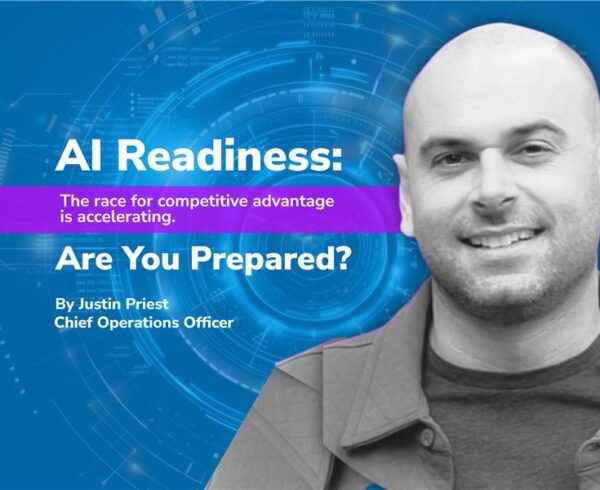I’ve seen IT leaders make major investments in new technology only to discover the root problem wasn’t the system at all. The real difference comes when strong talent is paired with smart process design. When the right people are empowered to simplify how work gets done, technology becomes an enabler and not the solution itself.
The organizations that consistently outperform aren’t the ones with the flashiest tools. They’re the ones that align skilled people with processes designed around outcomes, not bureaucracy.
THE PROBLEM HIDING IN PLAIN SIGHT
At a recent client, a mid-sized financial services firm, IT teams struggled with turnaround times that stretched into weeks for even routine database updates. Leadership assumed a new ticketing system was the answer.
Instead, one of our consultants started by observing how work truly moved through the organization. What she found was eye-opening: a single schema change required 11 approvals across four systems. Seven were redundant, created over time by well-intentioned teams layering on extra checks. Each step felt necessary, but in reality, the process had become more complex than the work itself.
This is not unique. Gartner reports that nearly 70% of digital transformation initiatives stall because of overly complex processes rather than the underlying technology. The pattern is clear: it’s rarely the tool that’s broken, it’s the way the work is structured around it.
STRONG TALENT CREATES ALIGNMENT
The consultant’s impact came not from cutting steps for efficiency’s sake, but by reframing the process around the real business need. She asked: Which risks actually mattered? Where was value truly being added? Within two weeks, she reduced 11 approvals to 3 meaningful checkpoints.
The results were immediate: turnaround times dropped from 15 days to 4. Accuracy improved. Teams reported higher confidence in the decisions they were making.
This is what happens when strong talent is embedded to guide simplification. According to Deloitte, organizations that streamline workflows in this way can see a 20–30% boost in productivity.
The lesson: tools amplify value only after people and process are aligned. Without that alignment, complexity simply compounds.
START WITH THE WORK, NOT THE WORKFLOW
The best IT leaders know that processes should serve outcomes, not the other way around. Over time, handoffs, required fields, and approvals pile up until they feel untouchable. But most of these steps are simply organizational habits.
The most effective improvements begin by asking:
If you had to deliver this outcome with half the steps, which ones would you keep?
When processes are simplified and guided by capable talent, the remaining steps not only move faster, they become stronger, because people can focus on what matters most. And the benefits go beyond speed: Accenture found that organizations removing approval bottlenecks see an 80–90% reduction in manual errors, showing that simplicity often improves quality as well as efficiency.
THREE QUESTIONS TO ASK BEFORE BUYING ANOTHER TOOL
When I talk with IT leaders about workflow challenges, I encourage them to step back and ask three questions before approving another software purchase or automation project:
1. WHAT PROBLEM ARE WE ACTUALLY SOLVING?
Many approvals, fields, or checkpoints exist because of legacy issues that no longer apply. Clarify whether the step still serves a business-critical need.
2. COULD THIS OUTCOME BE ACHIEVED WITH FEWER STEPS?
Challenge the assumption that every handoff or approval is required. If it feels uncomfortable to remove it, ask whether it creates value or just the illusion of safety.
3. DO WE HAVE THE RIGHT TALENT TO DRIVE CHANGE?
Even the best-designed process will stall without people who can challenge assumptions and guide adoption. Strong talent is the catalyst for sustainable simplification.
Leaders who consistently apply these questions discover that the biggest gains come not from more tools, but from aligning people and process first.
THE REAL SOLUTION ISN’T MORE PLATFORMS. IT IS CLARITY.
Before you buy another tool, choose one routine task and trace how it actually gets done today. Then ask: if we were designing this now, would we build it the same way?
Most of the time, the answer is no. That is where real improvement begins. When strong people and streamlined process come together.
A CALL TO ACTION
The future of workflow optimization won’t be decided by adding more technology. It will be decided by leaders who recognize that talent + process alignment is the real differentiator.
At ConsultNet, we’ve seen firsthand how embedding the right expertise into the right environment delivers faster results, stronger outcomes, and lasting value.
What workflow bottlenecks are slowing down your team? I’d be interested to hear where you’ve seen talent and process work hand in hand to create better outcomes.






